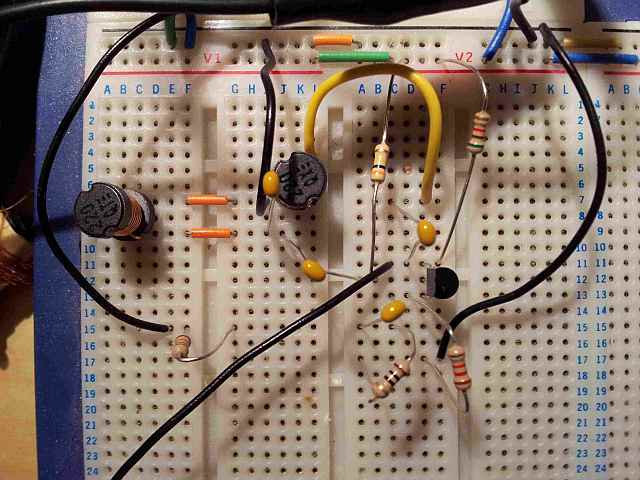I've been playing around with fundamental circuits (no professional EE background), and became interested in oscillators. I have been trying to build the Hartley oscillator as described here. The document states that "an Hartley Oscillator circuit can be made from [...] a pair of series connected coils [...]".
I had a couple of 22mH fixed inductors, which I hooked up on a breadboard with the other needed pieces. When I test the transistor amplifier independently, it seems to be working. However, there is no sign of oscillation in this circuit.
So my ignorant question is, can I use the fixed inductors indicated? I saw mention of the notion of 'mutual inductance', and I'm not sure you can get such with these discrete components.
Update
My friends and I started out by copying Oli's quick circuit, and were gratified to get a crisp sinusoid waveform. Thanks, Oli!
However, I clearly still have a long way to go, as when we attempted to change the frequency of the circuit we were mimicking, we got zero oscillation. And the original Hartley circuit remains stubborn.
I've bought a couple of used books and will be working through them with an eye to getting the original circuit (among others) working.





